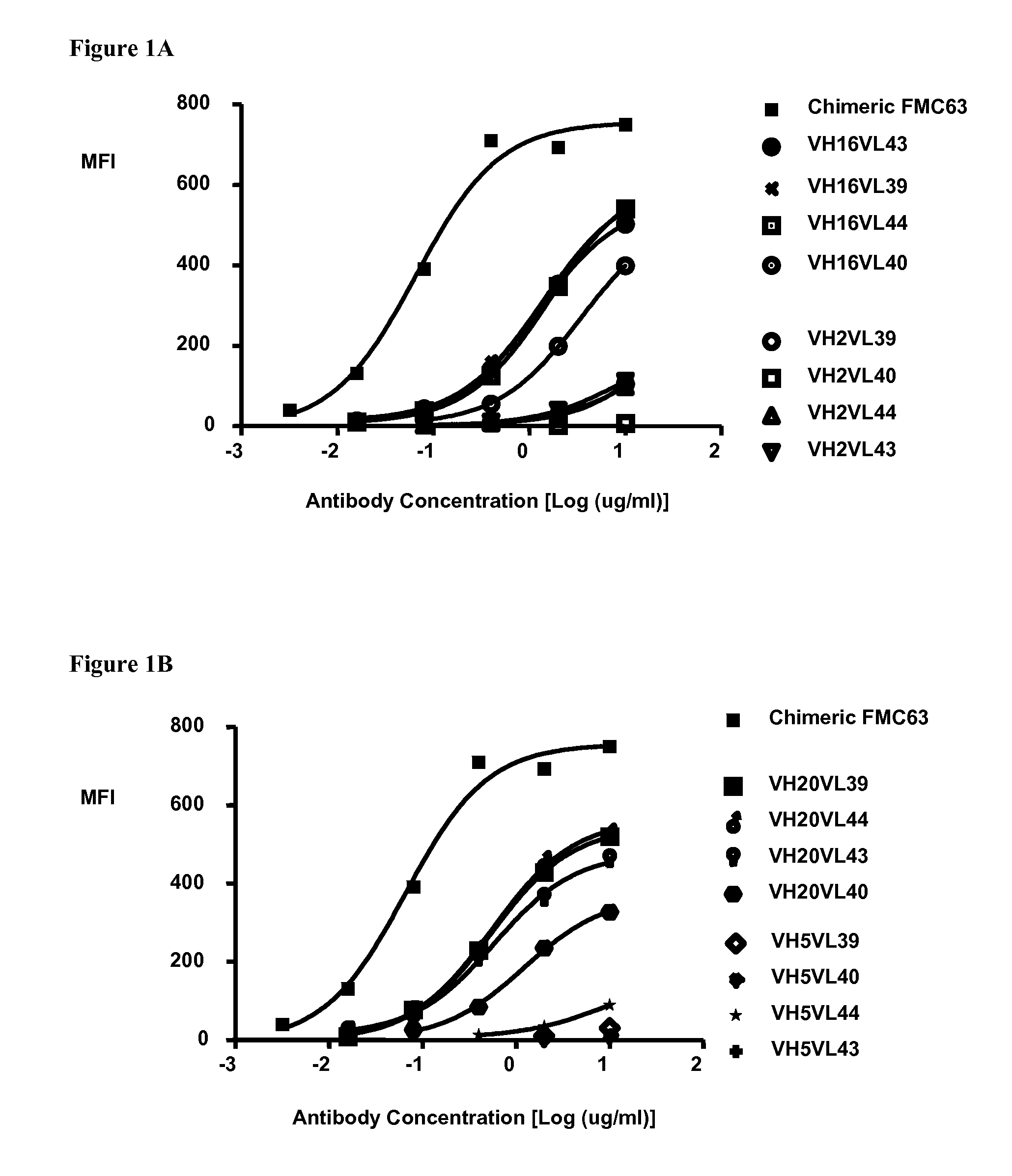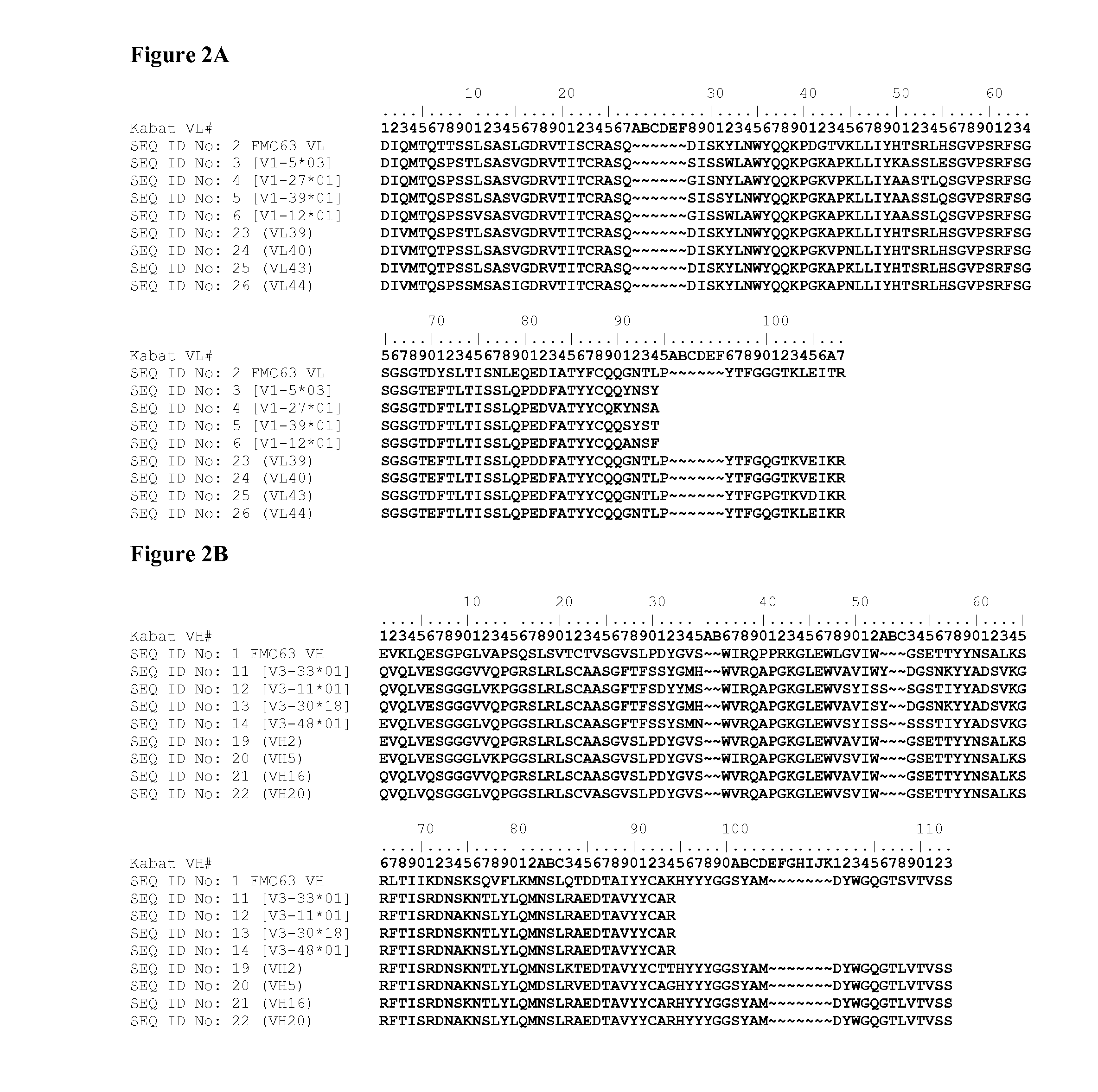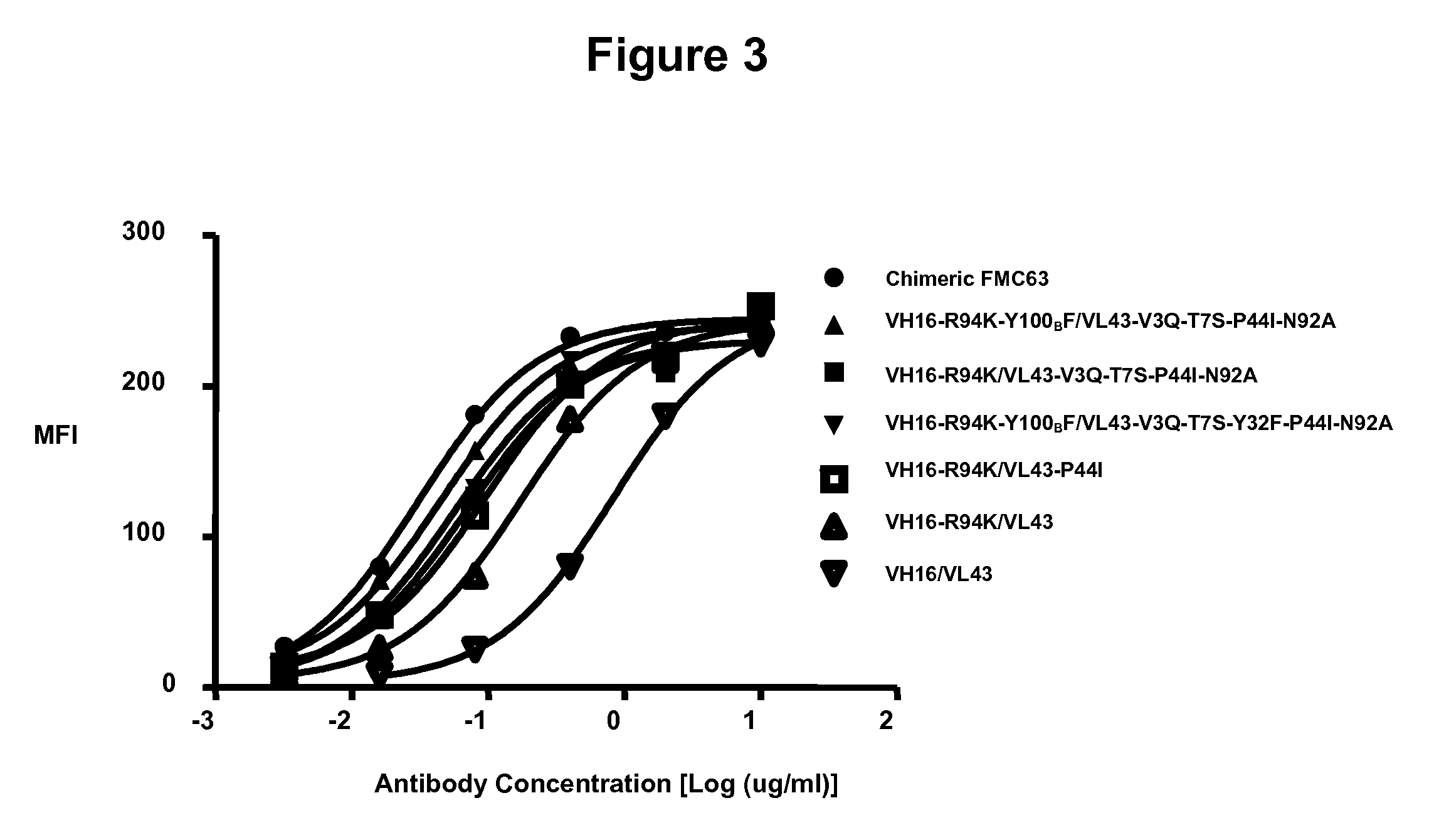Humanized antibodies that bind to CD19 and their uses
a technology of humanized antibodies and cd19, which is applied in the field of humanized antibodies or fragments thereof that bind to human cd19, can solve the problems of preventing the treatment of refractory patients, unable to draw conclusions regarding therapeutic efficacy from this small group of refractory patients, and unable to achieve complement dependent cytotoxicity, etc., to achieve the effect of improving complement dependent cytotoxicity
- Summary
- Abstract
- Description
- Claims
- Application Information
AI Technical Summary
Benefits of technology
Problems solved by technology
Method used
Image
Examples
example 1
Humanization of Mouse Monoclonal FMC63 Antibody Against Human CD19
[0191]Humanizing the anti-human CD19 murine antibody FMC63 including selection of human acceptor frameworks, back mutations, and mutations that substantially retain and / or improve the binding properties of human CDR-grafted acceptor frameworks is described herein.
[0192]FMC63 is a murine IgG2a, kappa antibody isolated from mice immunized with the human prolymphocytic leukaemia cell line JVM3 (Zola H. et al (1991), Immunol Cell Biol., 69:411-22.), and for which variable regions are known and publicly available (Heavy chain NCBI accession number, CAA74659 (SEQ ID NO: 1); Light chain NCBI accession number, CAA74660 (SEQ ID NO: 2)). Methods for assaying antigen-binding affinity are well known in the art and include half-maximal binding assays, competition assays, and Scatchard plot analysis.
Design of the Reshaped Variable Regions
[0193]Selection of human acceptor frameworks: Homology matching was used to choose human accept...
example 2
Binding of the CD19 Antibodies to B Cell-Derived Tumor Cell Lines: Flow Cytometry Analysis
[0214]Binding of the CD19 humanized monoclonal antibodies by flow cytometry to Raji tumor cells (human Burkitt lymphoma, DSMZ ACC319), NALM-6 (human B cell precursor leukemia, DSMZ ACC128) and SU-DHL-6 (human B cell lymphoma, DSMZ ACC572) (all cell lines from DSMZ Braunschweig, Deutschland) was assessed. Cells were incubated with serial dilutions of each humanized monoclonal antibody. An irrelevant human IgG1 was used as a negative control. The cells were washed and detected by a phycoerythrin-labeled (PE) anti-human secondary antibody (eBioscience, CA, USA) and analyzed by flow cytometry. To ensure comparable levels of staining between humanized candidates and parental murine antibody, a chimeric FMC63, i.e. an antibody which consists of the FMC63 murine heavy variable domain fused to human IgG1 heavy constant domains as shown in SEQ ID NO: 68 and the murine light variable domain fused to kapp...
example 3
Scatchard Binding Analysis of the Anti-CD19 Human Antibodies to Raji Tumor Cells
Scatchard Binding Analysis of Humanized Antibodies to Raji-B Tumor Cells
[0216]The constant binding affinity of an antibody to its target can be determined with a saturation binding curve. At equilibrium, the amounts of bound and free antibody to its binding site are indicative of the dissociation binding constant Kd. Usually, for one single binding site, the ratio bound / free versus bound antibody has a linear correlation, where the slope corresponds to the inverse of the binding constant Kd.
[0217]Tested antibodies were labelled with the fluorescent dye europium (Eu3+) (PerkinElmer, MA, USA). Eu3+ offers the possibility to quantify the amount of bound antibody molecules to cells as well as free antibody molecules. Saturation of binding to Raji cells by selected humanized candidates was followed via Eu3+ using time resolved fluorescence. To demonstrate the binding specificity of Eu3+-labelled candidates wi...
PUM
| Property | Measurement | Unit |
|---|---|---|
| thermostability temperature | aaaaa | aaaaa |
| thermostability temperature | aaaaa | aaaaa |
| thermostability temperature | aaaaa | aaaaa |
Abstract
Description
Claims
Application Information
 Login to View More
Login to View More - R&D
- Intellectual Property
- Life Sciences
- Materials
- Tech Scout
- Unparalleled Data Quality
- Higher Quality Content
- 60% Fewer Hallucinations
Browse by: Latest US Patents, China's latest patents, Technical Efficacy Thesaurus, Application Domain, Technology Topic, Popular Technical Reports.
© 2025 PatSnap. All rights reserved.Legal|Privacy policy|Modern Slavery Act Transparency Statement|Sitemap|About US| Contact US: help@patsnap.com



